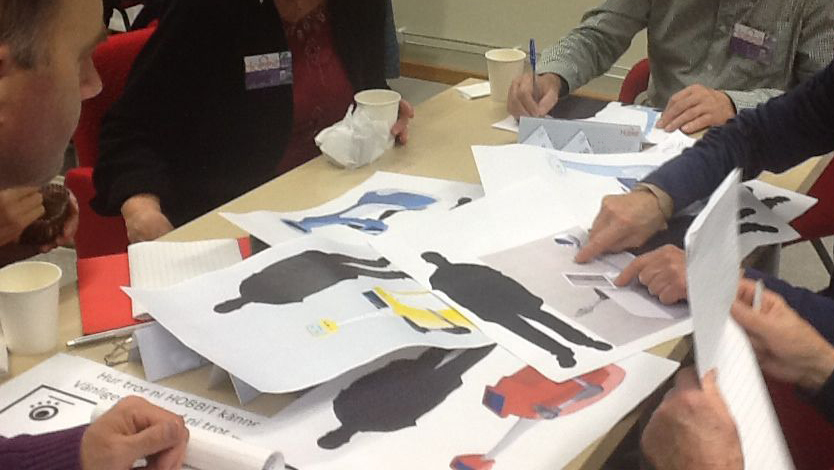HOBBIT Project FP7 Core Teams(Skip Content)
The following core teams are needed to prepare demos and user trials and will give answer to specific questions:
USER TEAM - "The voice of the user in the project"

The goal of the HOBBIT user team is to establish a continuous,
user centred approach. By assessing and identifying user needs and requirements, the user team involves real potential users which later on will also
be involved in trials with actual HOBBIT-prototypes. The methodological approach consists of quantitative as well as qualitative methods, including
participatory exercises, questionnaires, interviews and qualitative diary methods.

The Mutual care concept is investigated from the users point of view based on questions like:
What attributes (appearance or behaviour) does the robot have in order to be a "Mutual Care" robot?
How will Mutual Care be tested in the prototype user trials? The main task is to provide user requirements that will serve as a direct, user-driven input into specifications for design and performance of HOBBIT.
DESIGN TEAM - "The voice of the user in the project"

The goal of the HOBBIT Design team is to formulate a plan to ensure a "human centred" robot development starting from knowledge collected by the user team. The user-centred design focuses on the needs, wants, and limitations of the primary and secondary users of Hobbit's mutual care robot.
The Design team will give answer to questions such as:
- How will the design of the head with emotions look like?
- Where are tray and touchscreen positioned for an ergonomic design?
- Which dialogs including logic and emotions are needed to simulate a "Mutual Care" behaviour? How do they look like in detail?
The main task is to conceptualize the problem - the users' needs from requirements defined by the Hobbit User team (i.e. defining goals and objectives) - and deciding a design roadmap for the Hobbit Implementation team to construct the different robot prototypes.
IMPLEMENTATION TEAM - "Make the robot work"

Make the robot work based on input from the user and design teams.First, the team assemblies the robot - for example: adding the arm and gripper, the head and the touchscreen. Once these components are on the robot - in the right spot - the cameras and the arm have to be calibrated and the software framework set up to communicate with all the parts of the robot. The next step is the integration and testing of the required functionality for each stage of the project. While doing this, the user-team will show up and test the overall setup and suggest changes regarding user acceptance and ease of use.
Here the team has two main tasks:
- Development - continuation and improvement of a designed robot solution
- Testing - in situ testing a designed robot solution



